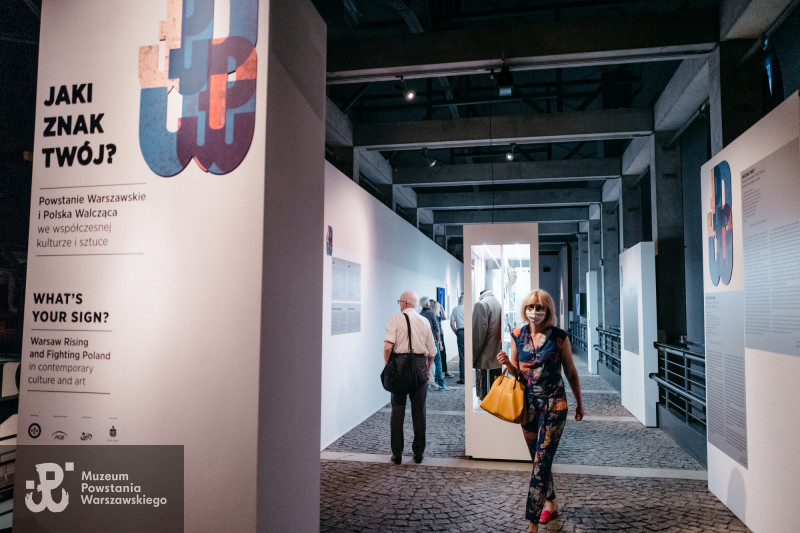



The Exhibition was opened for visitors in August 2020 as a part of official commemorations of the 76th anniversary of the Warsaw Rising. It presents hundreds of artefacts, media or works of art referring to or bearing the symbol of the Fighting Poland.
“In our everyday lives, we have no opportunity to see for ourselves whether we would live up to this ideal of valour, courage, selfless sacrifice and heroism, or whether we would prove ourselves as defenders of the fundamental values. The affinity with the symbol of the Fighting Poland is like a skill badge worn on our patriotic ego – not a virtual or imagined ability, but almost a tangible proof that we potentially could become such heroes. By identifying ourselves with this symbol, we wish to become a part of its ethos.”
Anna Grzechnik, Curator of the exhibition

“The title of the exhibition is a reference to the poem “Catechism of the Polish Child” by Władysław Bełza, which starts with the words “Who are you?”. Written in 1900 when Poland did not exist on the map of the world, the poem was meant to arouse national feelings and pride, and to keep the Polish identity alive under the foreign rule.”
Anna Grzechnik, Curator of the exhibition

Sign of the Fighting Poland
“The sign of the Fighting Poland, popularly known as the Anchor, became the symbol of the Polish Underground State and Poles' resistance against the occupier during the German occupation of Poland. It was designed following a contest announced in January 1942 by the Information and Propaganda Bureau of the Home Army Headquarters at the initiative of Czesław Michalski "Jankowski". The contestants were tasked with designing an underground symbol of the Fighting Poland that would be easy to reproduce and paint. The jury panel selected two leading projects – the Anchor, i.e. the letters "P" and "W" combined to create the shape of an anchor, and two crossed swords from the battle of Grunwald – of which the former was finally selected as the winner. The winning project was designed by Anna Smoleńska "Hania", a scouting instructor. Since the publication of the results of the contest in the Polish underground paper Biuletyn Informacyjny on 16 April 1942, the symbol became widely used during minor sabotage operations – it was painted on walls and pavements at various public locations. The most famous Anchor was painted by Jan Bytnar "Rudy" on the plinth of the Airman Monument in Unii Lubelskiej Square, right on the German police district's doorstep. After the war, the symbol served as inspiration for various democratic opposition organisations, e.g. Konfederacja Polski Niepodległej (Confederation of Independent Poland) and Solidarność Walcząca (Fighting Solidarity). It was not until after 1989 that the Anchor found its place in the official pantheon of the Polish national symbols, which culminated in the adoption of the Act on the Protection of the Sign of the Fighting Poland by the lower house of the Polish Parliament (Sejm) in 2014.”
dr Paweł Ukielski